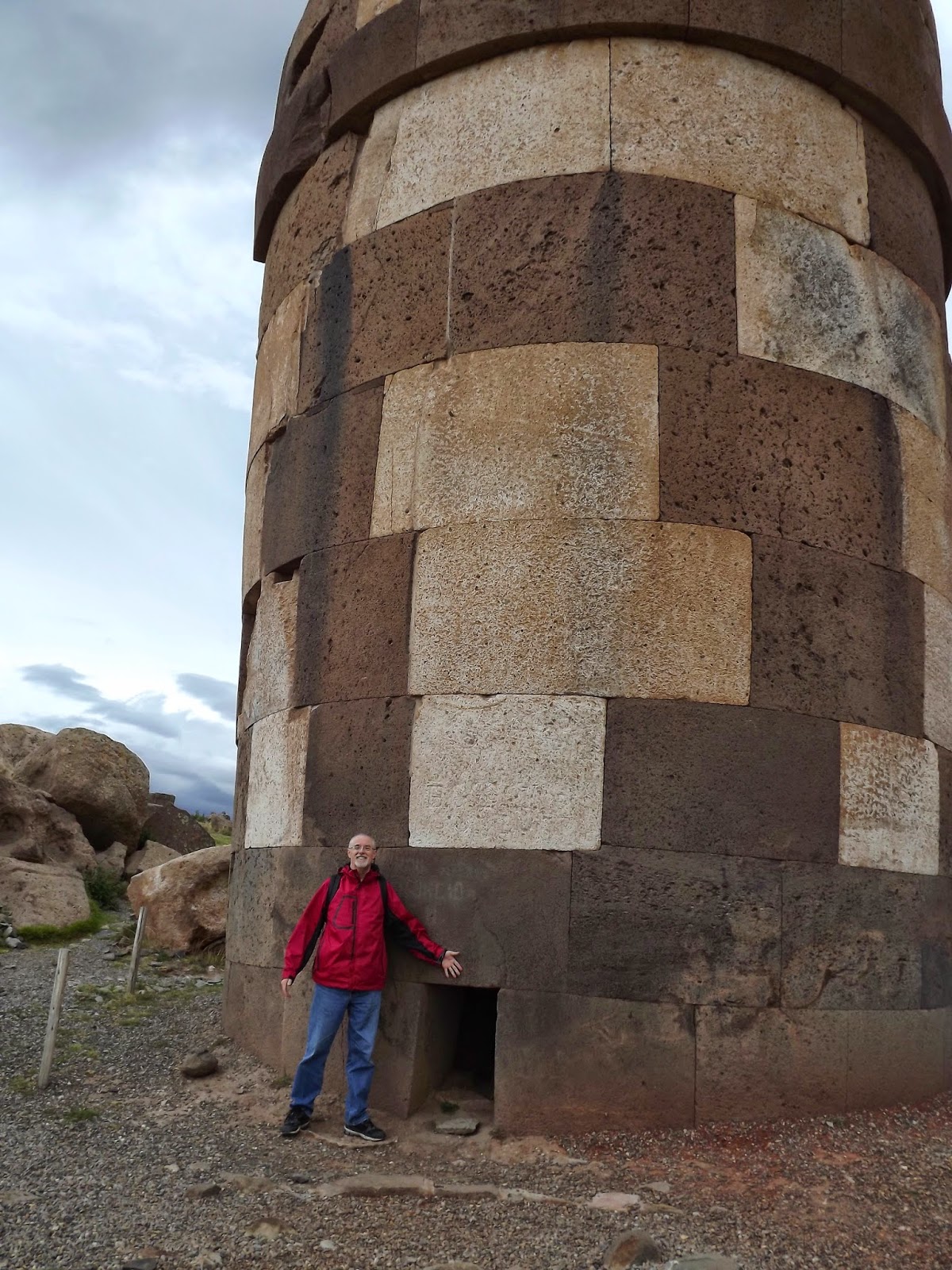After a very long interlude I'm back. Between holidays, travel and lack of computer access, I'm WAY behind in my blogging, but I have a treat for you. We're going to Bolivia! With lots of interesting adventures on the way. Whoot!
We took a hop across the border just after Christmas, having some holiday time in hand, and the opportunity so close to us. We had a great time, took a million pictures and had some very interesting experiences, some of them wonderful and some, well... not so much. It was a very full eight days, and the eye-openers started long before we got across the border.
We flew out of Tarapoto to Lima, touched down briefly in Cuzco and then on to Juliaca, Peru. There's no airport in Puno, which was where we planned to spend our first night, so after we took the "milk run" to Juliaca we had to hire a taxi to drive the 45 minutes to Puno. En route to Puno, our amiable driver Ernesto asked if we had ever been to Sillustani. No, we hadn't. Would we like to see some ancient tombs and some beautiful scenery? Absolutely! We were on vacation, already had a hotel reserved for the night in Puno and our sense of adventure was in full gear. And wow! Sillustani was definitely worthy of a spur-of-the-moment decision.
 |
| At the base of the hill looking up at some of the chullpas. |
Sillustani is an ancient burial ground of the Colla, who were pre-Incan Aymara people. The site is high and arid, and overlooks Lake Umayo, near Puno in the high plains of southern Peru.
 |
| Looking over the storm-lashed Lake Umayo |
 |
| Stone walls interlace over the undulating hills |
The tombs are above-ground structures which housed the remains of the dead. Known as chullpas, these tombs were constructed of stone blocks, some of them massive, and were built for the remains of the nobility. The larger and grander the tomb, the more important the person or people within had been. The deceased was placed in the fetal position within a basket-like structure woven of grass or reeds. Food and tools that would be needed in the afterlife were placed in the tomb along with the body.
 |
| Many tombs are badly damaged, and have been looted long ago. |
 |
| Remains of stone chullpas of varying sizes at the site. |
Some of the chullpas were built to house entire family groups, and in the dry, protected interior of the tombs, many of the bodies became naturally mummified. The openings of the chullpas face east, in keeping with the belief that the Sun was reborn each morning from Mother Earth.
 |
| Massive stone blocks of varying colors form this chullpa. |
 |
| Standing stones form a large and still-distinct circle |
 |
| Varying sizes and construction styles are found at Sillustani. |
Grave robbers have long since stripped the tombs of their contents and the mummified remains of a few of the inhabitants are now displayed in a museum in nearby Puno. But in the chilly wind and waning light of late afternoon, and under the threatening blue-grey sky, it was easy for my imagination to run wild as we walked amongst the ruins. A couple of times I thought I heard faint chanting, and there was an eerie sense of the past slipping silently into the present. I suppose some of that may also be attributed to the thin air and the beginnings of the altitude headache that was forming between my eyes. Whatever the cause, the atmosphere at Sillustani was distinctly other-worldly, and left me marvelling at how deeply the rivers of history run in Peru.
 |
| Peru's ancient past breathes like a living creature |

Wow, what an eerie marvelous experience to visit ancient tombs. Your photos are incredible! Such a beautiful place, in a mostly natural state. Thank you for sharing your detour with us :)
ReplyDeleteLisa
Thanks Lisa! It was an amazing place ro visit. And a great start to our trip.
ReplyDelete